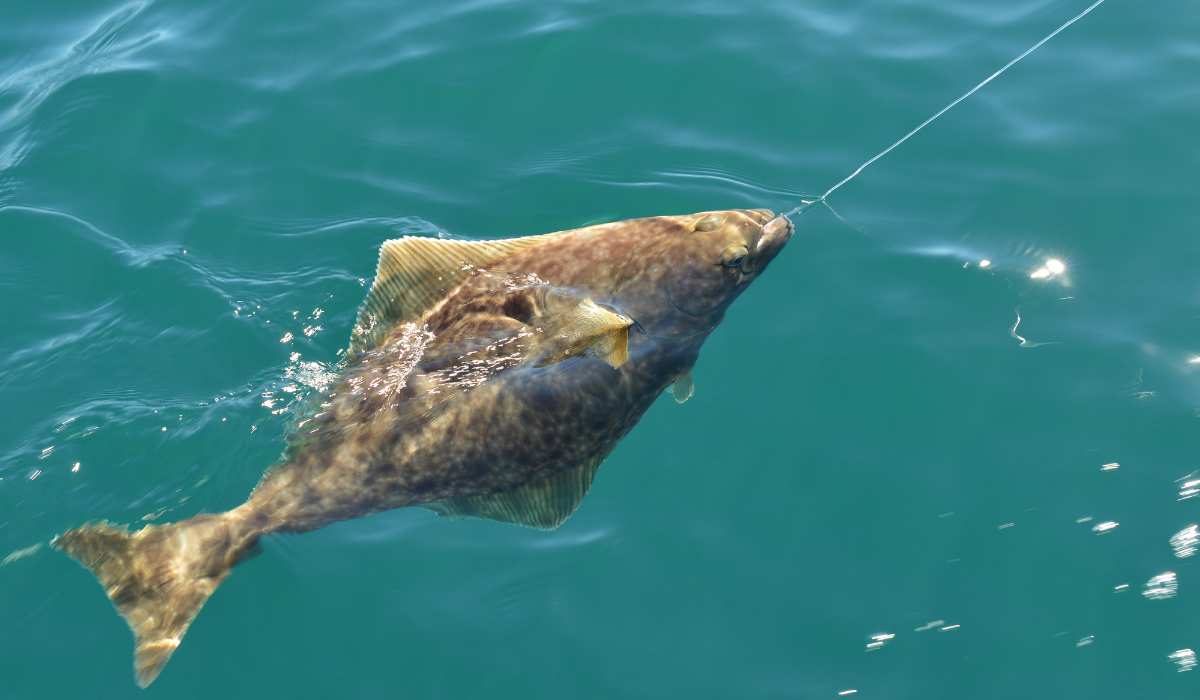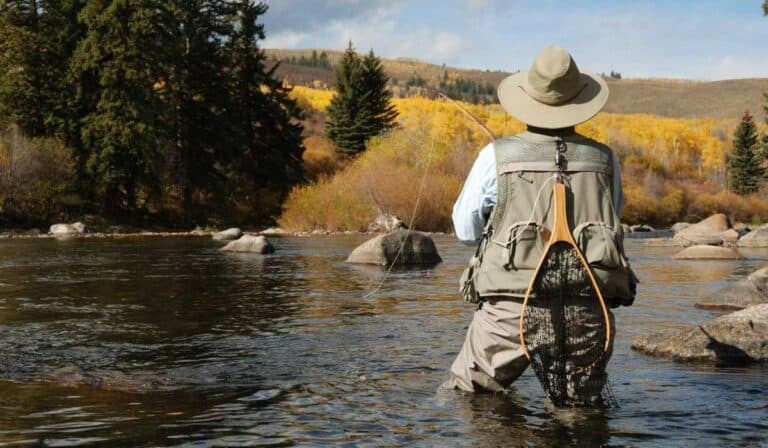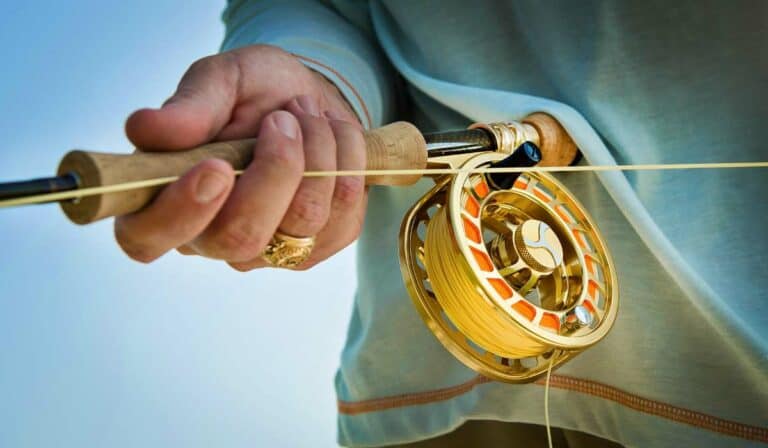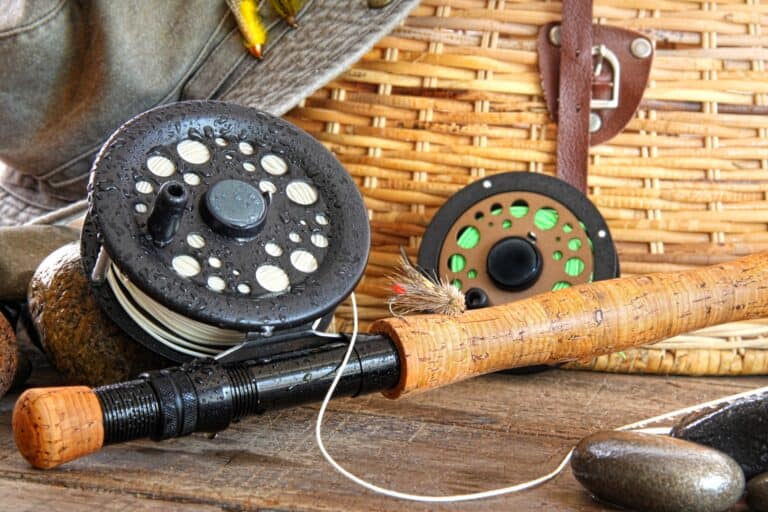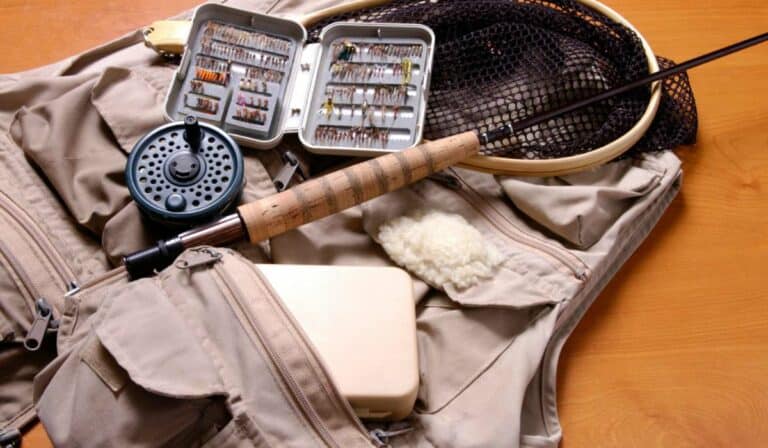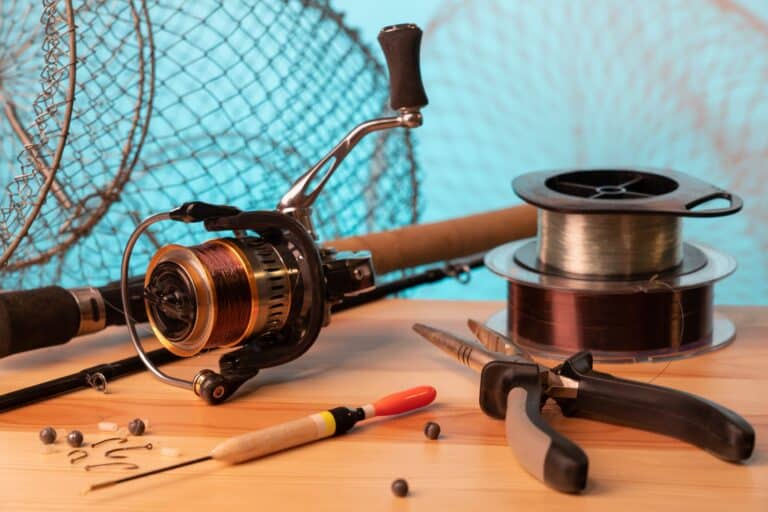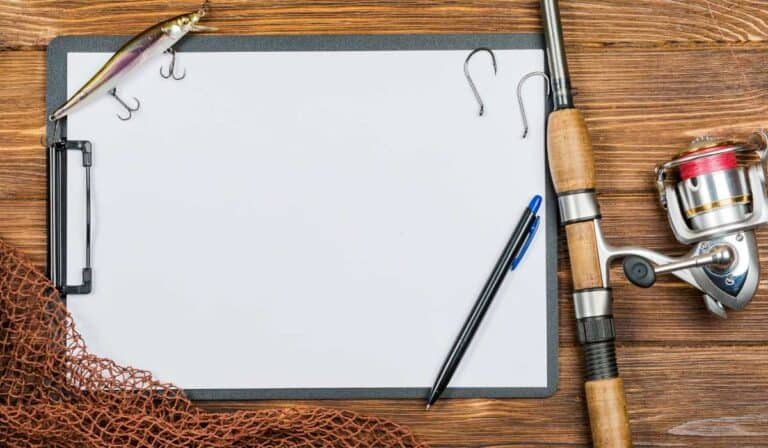Best Halibut Bait: Tips for Successful Halibut Fishing
When it comes to catching big halibut, choosing the best halibut bait is crucial for success. In this comprehensive guide, we will dive deep into various aspects of selecting and using the most effective baits to attract these prized fish.
We’ll discuss how to prepare your bait in a way that appeals to even the most elusive halibut, as well as set up your rig for optimal performance. You’ll learn about different fishing techniques specifically designed for targeting halibut and ensuring you reel in those monsters from the ocean floor.
In addition, we will cover essential tips on storing your bait properly so it remains fresh and enticing throughout your fishing trip. We’ll also identify common mistakes made by anglers when using their chosen bait and provide best practices that can significantly improve your chances of landing a trophy-sized catch.
So sit back, relax, and get ready to become an expert on finding the best halibut bait for an unforgettable fishing experience!
Table of Contents
1. Choosing the Best Halibut Bait

Knowing which bait to use and where to obtain it is essential for successful halibut fishing.
Natural Baits
Herring: Herring is a popular choice among anglers due to its oily nature and strong scent that attracts halibut. You can purchase fresh or frozen herring at most tackle shops.
- Squid: Squid is another excellent option as it’s tough and stays on the hook well, making it ideal for deep-sea fishing.
- Mackerel: Mackerel is an oily fish with a strong scent similar to herring, making it an effective bait for attracting halibut.
- Octopus: Octopus tentacles are known for their durability and ability to stay on hooks during rough conditions, which makes them great for targeting larger halibuts.
Lures & Artificial Baits
If you prefer using artificial baits or lures when fishing for halibut, there are several options available that mimic natural prey items such as squid or small fish species like sanddabs. Field & Stream recommends using large plastic swimbaits with realistic patterns or jigging spoons designed specifically for bottom-dwelling species like halibut.
Now that you know the best bait options for catching halibut, it’s time to learn how to prepare and store them properly. Read on for tips on preparing your bait and setting up your rig for a successful fishing adventure.
When it comes to snagging halibut, the correct lure is critical for success. To ensure you have the best chance of a successful catch, preparation and careful selection are key. Now that we’ve discussed selecting your bait, let’s move on to preparing it for use.
Preparing Halibut Bait
To ensure successful halibut fishing, one must properly prepare the bait; this article outlines cleaning and cutting techniques for doing so. In this section, we’ll discuss the best techniques for preparing halibut bait, including cleaning and cutting methods.
Cleaning Your Bait
Before you begin preparing your halibut bait, it’s crucial to clean it thoroughly. Rinse off any dirt or debris with fresh water and remove any scales or slime from the fish. This will help ensure that your bait is as enticing as possible to hungry halibut.
Cutting Techniques
When cutting up your chosen baitfish, there are a few different methods you can use:
- Steaks: Cut cross-sections of the fish about 1-2 inches thick. This method works well with larger baits like salmon or mackerel.
- Fillets: Remove both sides of the fish by slicing along its backbone. Fillets work well with smaller baits such as herring or anchovies.
- Hunks: For bigger baits like octopus or squid, cut them into large chunks before threading them onto your hook.
Tips for Cutting Success
- Maintain a sharp knife while cutting – dull blades may damage delicate tissues in the process.
- If using live baitfish, stun them first by placing them on ice briefly before cutting – this minimizes stress and keeps them fresh.
- Always cut bait in a clean environment to avoid contamination from dirt or bacteria.
Utilize these tips for a successful halibut-fishing outing with the ideal bait.
With proper planning and expertise, you can guarantee a successful halibut-catching venture. Setting up your rig is an important step in ensuring that you catch a great fish.
Click here to read about Best Hiking Shoes for Wide Feet
2. Setting Up Your Halibut Rig
Setting up your halibut rig correctly is crucial for a successful fishing trip. By understanding the right line types, weights, and other components, you can maximize your chances of catching these magnificent fish.
Selecting the Right Line Type
Choosing the appropriate fishing line is essential when targeting halibut. Braided lines are popular among anglers due to their high strength-to-diameter ratio and minimal stretch properties. This allows for better sensitivity when detecting bites and increased power during hooksets.
Finding the Perfect Weight Size
The weight size you choose depends on factors such as water depth, current speed, and bait type. A general rule of thumb is to use 1 ounce of weight per 10 feet of water depth. However, if there’s a strong current or larger baits are used, heavier weights may be necessary to keep your bait near the bottom where halibuts reside.
Leader Material Choices
- Mono Leader: Monofilament leaders provide excellent abrasion resistance against rocks and debris while maintaining enough stretch to absorb sudden jerks from powerful halibut strikes.
- Fluorocarbon Leader: Fluorocarbon leaders offer superior invisibility underwater, making them ideal for clear waters with wary fish that might shy away from visible lines.
Incorporating these elements into your rig setup will help ensure an enjoyable and productive halibut fishing experience. Drill often for success – try different rigging elements to discover the ideal arrangement.
Once the rig is ready, it’s time to cast out and commence angling. Fishing techniques for catching halibut can be tricky and require some practice in order to become successful at it.
3. Fishing Techniques for Catching Halibut

In this section, we’ll explore two popular methods: trolling and jigging.
Trolling for Halibut
Trolling is a technique where you slowly move your boat while dragging bait or lures behind it. This method allows you to cover more ground and entice halibut from a distance. To effectively troll for halibut, follow these tips:
- Use heavy-duty rods and reels designed for saltwater fishing.
- Select a suitable line weight (typically between 50-80 lbs).
- Maintain a slow speed of around 1-2 knots.
- Keep your bait close to the bottom as halibut are bottom-dwelling fish.
Jigging for Halibut
Jigging, on the other hand, involves dropping a weighted lure vertically into the water column and repeatedly lifting and lowering it with sharp jerks of the rod tip. This mimics an injured prey item that may attract hungry halibut lurking below. Here’s how to jig effectively:
- Choose jigs specifically designed for targeting halibut such as lead-head jigs or butterfly jigs.
- Use a braided line with a heavy fluorocarbon leader.
- Drop your jig to the bottom and retrieve it with short, sharp jerks of the rod tip.
- Maintain contact with the bottom as you work your jig through potential halibut territory.
Experimenting with both trolling and jigging techniques can help you determine which method works best for you in catching these elusive fish. Happy fishing.
By using the right fishing techniques, such as trolling with jigs or bait rigs, you can increase your chances of catching a halibut. To ensure that your catch stays fresh and ready to use for future trips, it is important to store your halibut bait properly.
Click here to read about Best Hiking Backpacks for Big Guys
4. Tips for Storing Your Halibut Bait
Proper storage of your halibut bait is essential to keep it fresh and effective when you need it most. Follow these tips to ensure your bait stays in top condition:
A. Keep It Cool
Maintain the freshness of your bait by storing it in a high-quality cooler with ice or frozen gel packs. This will help preserve its scent, texture, and overall appeal to halibut.
B. Use Airtight Containers
To prevent cross-contamination between different types of baits and minimize odor leakage, store each type of bait in separate airtight containers. This also makes it easier to organize and access them during your fishing trip.
C. Freeze Unused Bait Properly
- Vacuum-seal: If you have leftover bait that won’t be used soon, vacuum-sealing can extend its shelf life by preventing freezer burn.
- Label & Date: Clearly label each package with the type of bait and date it was frozen so you can easily identify what’s inside later on.
- Frozen Storage Time: Most baits can be stored safely in the freezer for up to three months without losing their effectiveness; however, some delicate baits like squid may degrade faster if not handled properly before freezing.
D. Thawing Frozen Bait
When it’s time to use your frozen bait, thaw it slowly in the refrigerator or a cooler with ice packs. Avoid using hot water or direct sunlight as this can cause the bait to become mushy and less appealing to halibut.
By following these storage tips, you’ll be well-prepared for your next halibut fishing adventure with fresh and effective bait.
Proper storage of your halibut bait is essential for success when fishing. To ensure you have the best chance of catching a large halibut, be sure to avoid common mistakes when using this type of bait.
5. Common Mistakes When Using Halibut Bait

Fishing for halibut can be an exciting and rewarding experience, but it’s essential to avoid common mistakes when using bait. By understanding these pitfalls, you’ll increase your chances of success and enjoy a more fruitful fishing adventure.
Using the Wrong Size or Type of Bait
One common mistake is using the wrong size or type of bait. When fishing for halibut, be sure to use baits that closely resemble their natural food sources in both size and appearance. Make sure you’re using baits that resemble their natural food sources in both appearance and size.
Not Setting Up Your Rig Correctly
An improperly set up rig can significantly decrease your chances of catching halibut. Ensure that you use the appropriate line weight and length for your target depth, as well as suitable hooks and sinkers. Learn how to properly tie knots like the Palomar knot, which provides excellent strength when securing hooks.
Neglecting Current Conditions
- Tides: Be aware of tidal changes while fishing since they affect halibut’s feeding patterns. Fish during periods with strong currents like incoming tides for better results.
- Water Temperature: Keep track of water temperature because halibut prefer colder waters (45-55°F). Use a fish finder with built-in temperature sensors if possible.
Not Paying Attention to Bait Presentation
Poor bait presentation can deter halibut from biting. Ensure your bait is securely attached to the hook and looks natural in the water. If using artificial lures, choose those that mimic the movement of live prey.
It is important to avoid common mistakes when using halibut bait in order to ensure a successful fishing trip. Adopting proper techniques when utilizing halibut bait can lead to a successful angling experience and greater chances of snagging large, scrumptious fish.
Click here to read about Ultimate Guide To Fishing For Sheepshead
6. Best Practices When Fishing with Halibut Bait
Here are some tips on how to make the most of your halibut fishing adventure while being responsible anglers.
Proper Handling of Fish
When you’ve caught a halibut, it’s crucial to handle the fish carefully and minimize stress. Use a fish grip tool or wet gloves when handling the fish, as this will help prevent damage to their slime coat which protects them from infections. Additionally, avoid dropping or dragging the fish across rough surfaces.
Safely Releasing Halibut Back into The Water
- Venting: If you’re practicing catch-and-release fishing, venting may be necessary if your halibut has experienced barotrauma due to rapid changes in pressure during its ascent from deep water. Learn how to safely perform venting techniques.
- Gently Release: Hold the fish horizontally in the water and gently move it back and forth until it regains strength before letting go.
- Avoid Overhandling: Minimize handling time by having pliers or hook removers ready for quick release.
Maintaining Your Gear & Equipment
To increase your chances of success when using halibut bait, it’s essential to keep your fishing gear and equipment in top condition. Regularly inspect your lines, hooks, and weights for signs of wear or damage, and replace them as needed.
When it comes to selecting the best halibut bait, there are several options to consider. Experienced halibut fishermen suggest using larger bait to target bigger halibut. Bait selection can vary depending on the location and season, but some popular options include:
- Salmon Heads: Salmon heads are a popular choice for catching halibut, especially in California. They are a great fish attractant and can be used in shallow water or on the ocean floor.
- Bait Balls: Bait balls are a combination of herring and other small fish that are tied together to create a larger bait. They are effective in attracting halibut and can be used with sabiki rigs or chum bags.
- Frozen Squid: Frozen squid is a popular bait choice for halibut anglers. It can be used alone or in combination with other baits.
- Shiner Perch: Shiner perch are a popular bait choice for targeting halibut in shallow water. They are a natural food source for halibut and can be used with a hook longer than 6 inches.
- Salmon Bellies: Salmon bellies are another popular bait choice for halibut fishing. They are a great fish attractant and can be used alone or in combination with other baits.
- Octopus: Octopus is a popular bait choice for catching halibut, especially larger ones. It can be used whole or cut into smaller pieces.
Remember, the key to successful halibut fishing is to experiment with different baits and techniques until you find what works best for you. Happy fishing.
Click here to read about A Guide To The Best GoPro for Fishing
FAQs Best Halibut Bait
What is the Best Bait for Catching Halibut?
The best bait for catching halibut includes live or fresh dead fish such as herring, mackerel, squid, and octopus. Artificial lures like large jigs and swimbaits can also be effective when targeting halibut. The key is to use a bait that has a strong scent and mimics their natural prey.
What is the Secret to Catching Halibut?
The secret to catching halibut lies in using the right bait, rig setup, and fishing technique. Patience plays an important role too; you should allow time for your baits to reach the ocean floor where these bottom-dwelling fish reside. Additionally, understanding tides and currents will help you locate productive fishing spots.
How Do You Attract Halibut?
To attract halibut, use scented baits or chum bags filled with crushed fish parts that release a strong odor into the water column. Position your boat over known feeding grounds or structures where they are likely to congregate. Use heavy sinkers so your bait reaches its preferred depths quickly while maintaining constant contact with the seafloor.
What Type of Bottom Do Halibuts Prefer?
Halibuts prefer sandy or muddy bottoms near underwater structures such as reefs, drop-offs, pinnacles, or rocky outcrops at varying depths ranging from 30-300 feet (9-91 meters). They often move between deep waters during daytime hours and shallower areas closer to shorelines at night in search of food sources.
Conclusion
In conclusion, choosing the best halibut bait requires careful consideration of factors such as location, time of year, and personal preference. Properly preparing your bait and setting up your rig can greatly increase your chances of catching a halibut. Remember to store your bait correctly and avoid common mistakes when using it.
By following best practices when fishing for halibut, even the most experienced halibut fishermen can improve their catch. Salmon heads and salmon bellies are popular choices for halibut bait, but don’t be afraid to try something new like deep creek bait.

